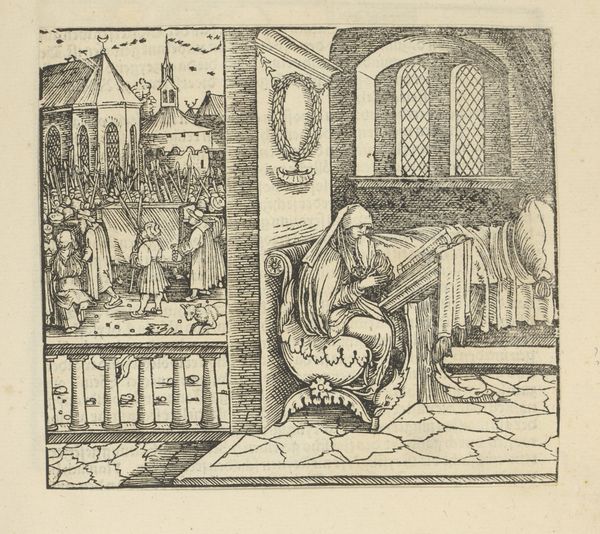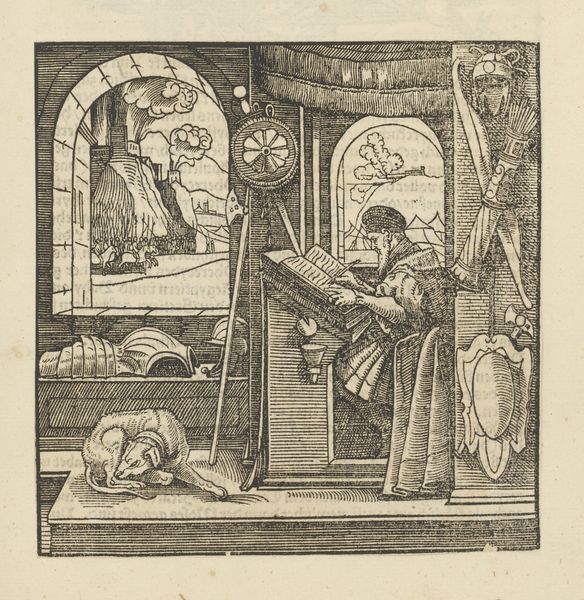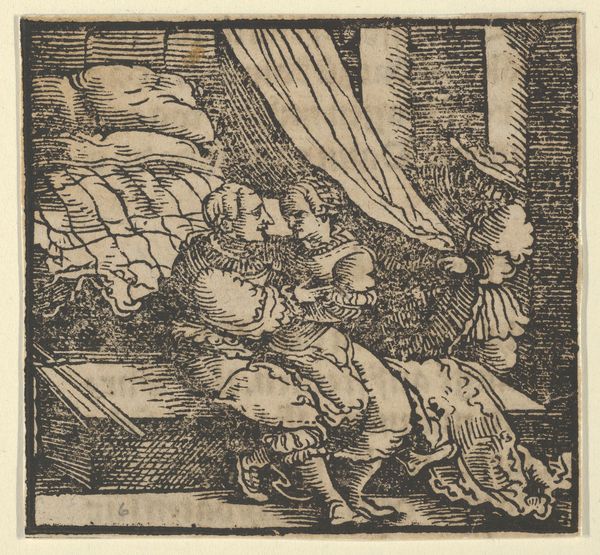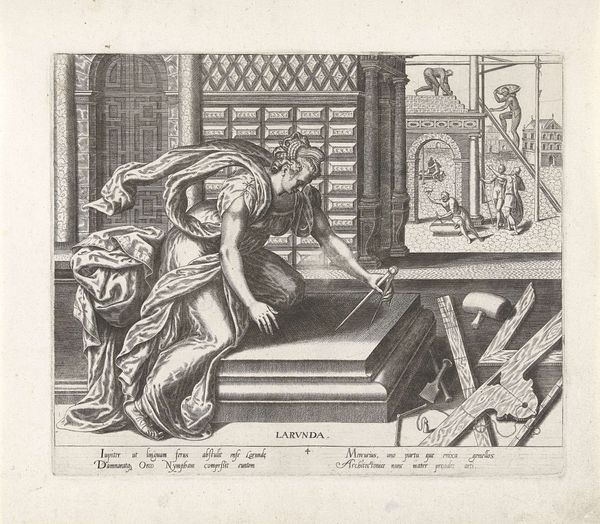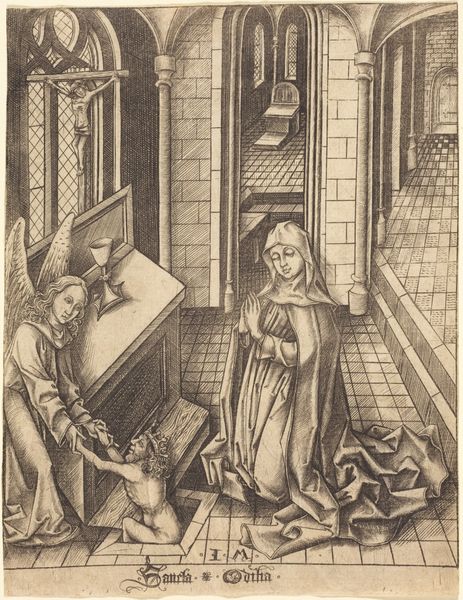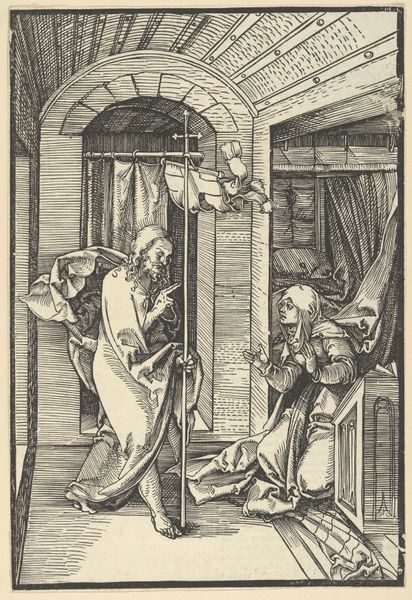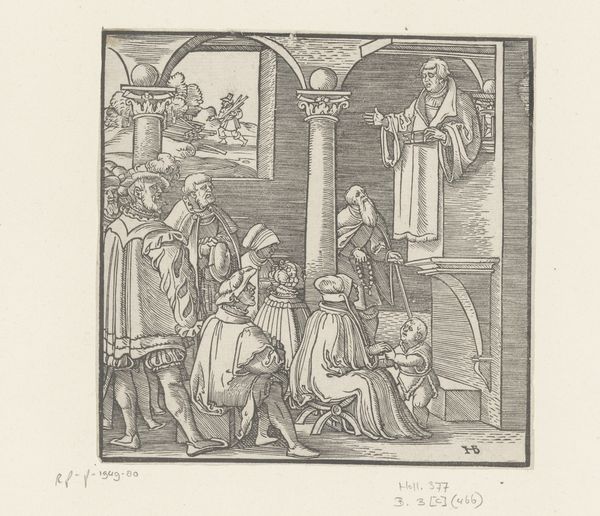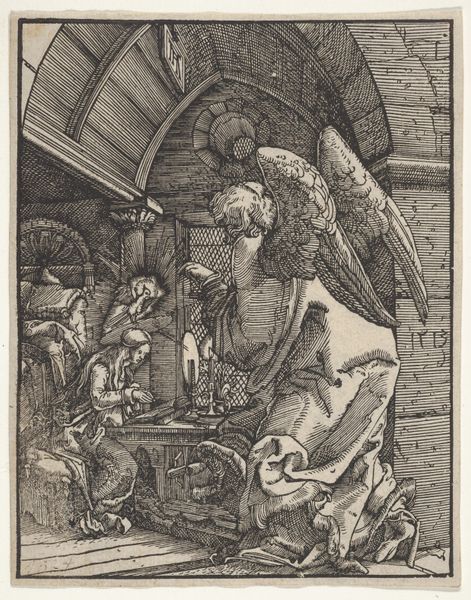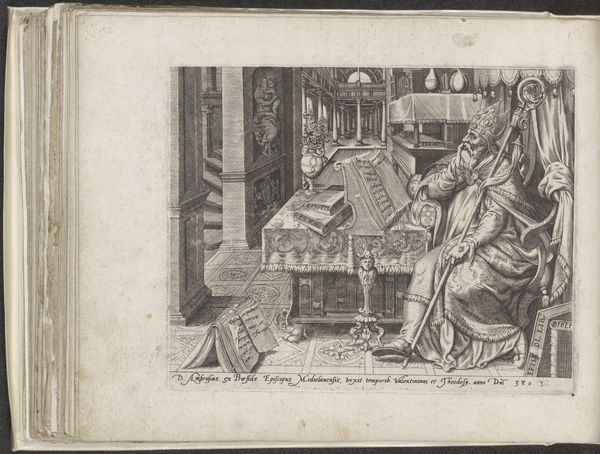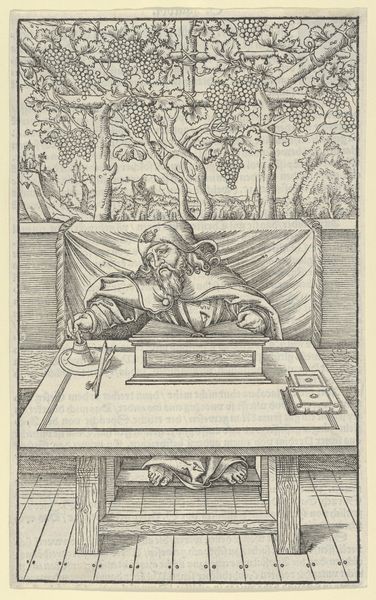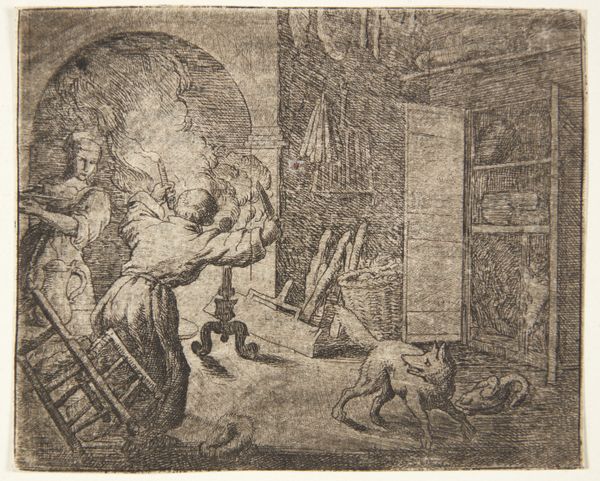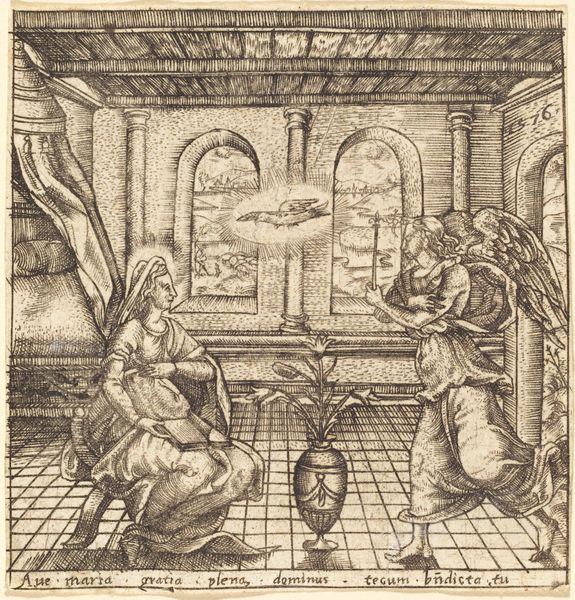
drawing, print, woodcut
#
drawing
# print
#
perspective
#
figuration
#
woodcut
#
line
#
genre-painting
#
history-painting
#
northern-renaissance
Dimensions: height 140 mm, width 155 mm
Copyright: Rijks Museum: Open Domain
Curator: Here we have a woodcut, now held in the Rijksmuseum, by Hans Schäufelein entitled "Two People Praying in a Bedroom," dating from around 1490 to 1538. Editor: The immediate feeling is of stark devotion within tight constraints, literally. The linear density presses down, that incredible texture creating such a rigid yet intimate space. Curator: Absolutely, there’s a potent sense of internalized piety here. Note the figures themselves, kneeling in prayer, positioned centrally. The candlelight between them and their bed suggests a moment of quiet introspection before, or after, sleep. We often see prayer as something performative, or public but this image is quite private. Editor: And look at the linear quality itself. Notice how the parallel hatching, cross-hatching and densely packed lines construct form, depth, and texture? It is all achieved through the orchestration of line—its thickness, density, and direction. Curator: The interior space has all the recognizable symbolic elements we’d expect, reinforcing a sense of established faith and social order. The patterning of the bed's fabric is intriguing; its meaning, however, is less obvious to contemporary eyes, though those of the era would immediately grasp its cultural import. Editor: It is quite visually complicated. It creates a fascinating interplay of flat surface and illusionistic depth. The formal choices are striking; a somewhat strange amalgamation, stylistically, where linear rigidity meets almost chaotic textures. The linear patterning is so intense; a kind of baroque sensibility struggling to emerge from the Late Gothic. Curator: These kinds of contrasts are the lifeblood of cultural interpretation. We get to understand these figures and the scene depicted through a layered web of symbols, some of which will remain forever obscured, even after thorough decoding. The work opens a window into the everyday rituals and spiritual frameworks that shaped lives long ago, the psychology and cultural forces that shaped the late medieval consciousness. Editor: Indeed. Considering its materiality and skillful articulation of form through such basic linear structures has further unlocked ways of considering how Schäufelein balanced visual economy and spiritual density.
Comments
No comments
Be the first to comment and join the conversation on the ultimate creative platform.
